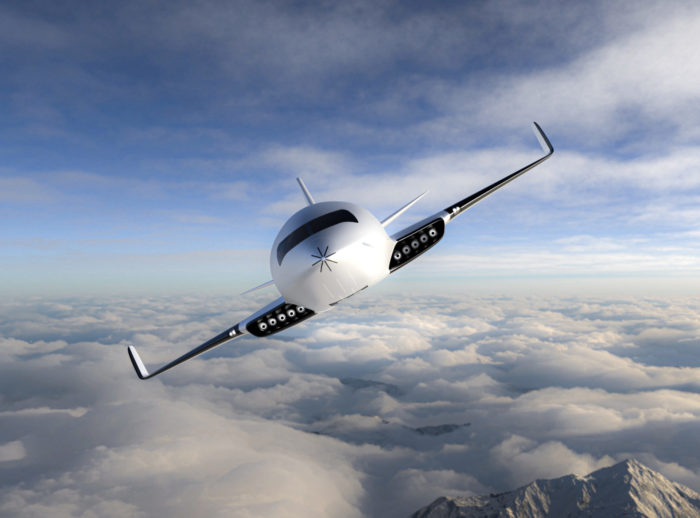Mar 16 2020
Perpetual Flying Machine
 I’m a sucker for perpetual motion machines. I don’t mean that I think they work – they don’t – but they are often intriguing contraptions out of some cyberpunk fantasy. They are also often a bit of a puzzle. How are they supposed to work, and why don’t they? That free energy or perpetual motion machines don’t work is a given, because of the laws of thermodynamics. Energy has to come from somewhere, so for each such claim it’s a fun game to figure out where the energy is actually coming from. This game also helps dispel any notion of continuous or free energy.
I’m a sucker for perpetual motion machines. I don’t mean that I think they work – they don’t – but they are often intriguing contraptions out of some cyberpunk fantasy. They are also often a bit of a puzzle. How are they supposed to work, and why don’t they? That free energy or perpetual motion machines don’t work is a given, because of the laws of thermodynamics. Energy has to come from somewhere, so for each such claim it’s a fun game to figure out where the energy is actually coming from. This game also helps dispel any notion of continuous or free energy.
A new perpetual motion claim is revealed in an article in the Rob Report. The claims is for an electric plane that will fly mostly with the energy generated by the friction of the flying itself. The idea is that the plane will have rechargeable electric batteries that are used for take-off and landing. But while in flight, the batteries will be recharged by vibrations and the flexing of the wings. The inventor, Michal Bonikowski, who calls his project Eather One, hopes this will yield enough energy to keep the plane flying indefinitely.
The problem with this concept, as with all perpetual motion concepts, is the second law of thermodynamics. Every time you change energy from one state to another, at least a little bit is lost. You can never have 100% efficiency. So the energy you use to propel the plane forward will have to be greater than the energy you harvest from pushing through the air. If you design a mechanism (as in the concept art) for harvesting air friction, the extra resistance from the mechanism will cause the plane to slow by more than using that energy to propel it will increase its speed. The entire process will be a net negative. You would be better off optimizing aerodynamics.
This is a common type of perpetual motion deception (and usually the inventor is deceiving themselves, although there are free-energy con artists out there as well). For example, many people have come up with the idea of “burning water” as fuel in a car. The problem is – water is not fuel. What they do is use the cars internal combustion engine (although you can also use a battery in an electric vehicle) to hydrolyze water into hydrogen and oxygen. Then they burn the hydrogen back with oxygen to yield energy that is then used to propel the car. The problem with this, again, is that pesky second law. You lose energy in this double conversion. You are better off just using all the original energy to drive the car – the side step of hydrolyzing then burning water just wastes energy.
Bonikowski’s concept would be similar to adding a generator to harvest energy from the spinning wheels of a car. Of course this would add resistance, and the process of harvesting energy from the car’s motion in order to further propel the car would just waste energy. But, you may be thinking, what about regenerative braking? That is basically what is happening there. That’s right – if you want to slow down the car then you might as well try to recapture some of that lost energy. You can’t get it all back, but anything is better than just wasting all that momentum wearing out the brake pads.
Can this concept be applied to jets or planes? I don’t know, but I suspect it’s far more complicated because we have to deal with lift and aerodynamics. The question is – is there any energy that is simply wasted in the operation of a plane, and can some of that energy be recovered with something like Bonikowski’s devices? I suspect that at best such energy recovery systems might add a few percent efficiency to an electric plane, and that may make them useful. Every bit counts. But will the systems be worth their weight? Weight is a more critical factor in flying than driving. These are the little engineering details I don’t see documented anywhere in Bonikowski’s concept. He may have them (I doubt it) but it is these little details that always kill perpetual motion delusions.
A system like this may also have more utility in gliders that may only need a little boost to help keep them aloft longer. The glide path of passenger jets, however, is vastly different – these things need a lot of energy to keep flying.
In fact, we are probably a long way off from electric jets being viable. Batteries need to be a lot more energy dense, and the entire electrical system a lot lighter as well. If we extrapolate out the current rate of battery improvement (so no new breakthroughs) it will be about 50 years or so before electric passenger jets are viable even for the shorter routes. Let’s hope we have a breakthrough, but Bonikowski’s concept is not it.






